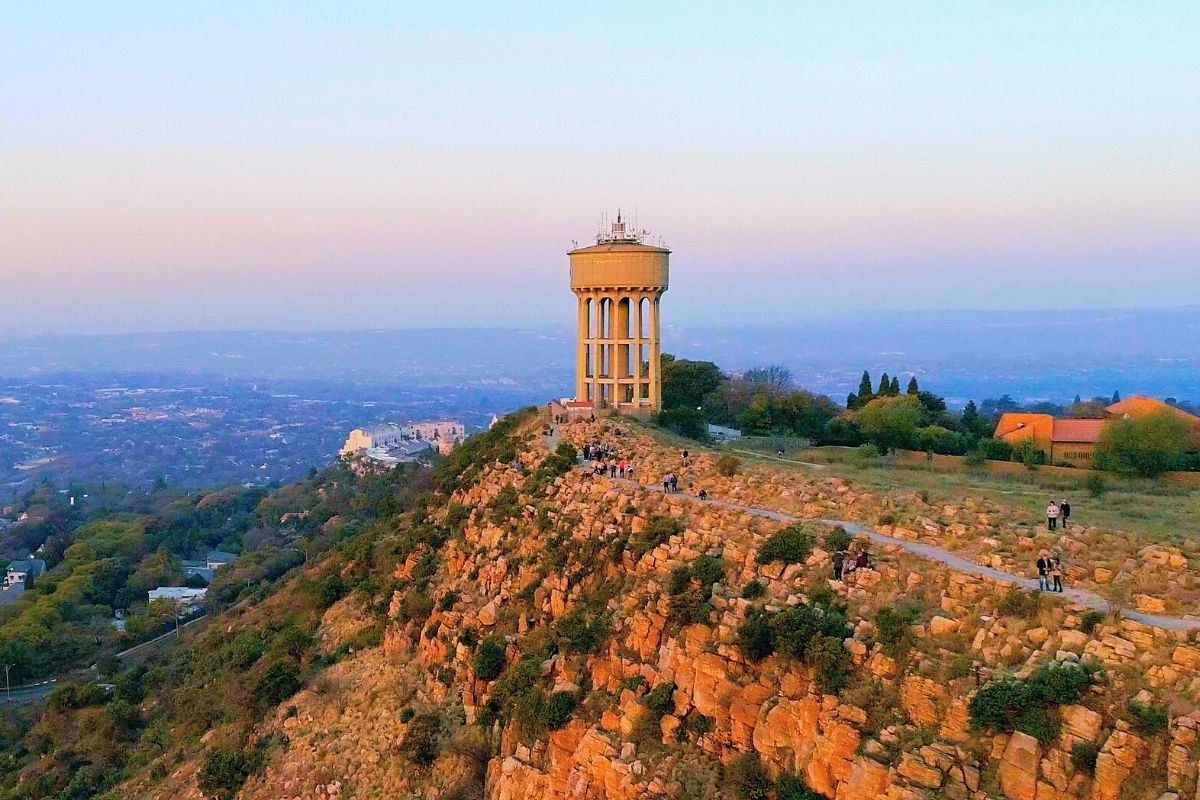What Does Johannesburg North Attractions Do?
What Does Johannesburg North Attractions Do?
Blog Article
The Johannesburg North Attractions Ideas
Table of ContentsAn Unbiased View of Johannesburg North AttractionsThe Definitive Guide to Johannesburg North AttractionsSome Known Questions About Johannesburg North Attractions.Not known Details About Johannesburg North Attractions Johannesburg North Attractions Fundamentals ExplainedFacts About Johannesburg North Attractions Uncovered
The city owes its place to the presence of a a lot more precious resource: gold. The city grew on the edge of the Witwatersrand Main Coral reef, a subterranean stratum of gold-bearing quartz-silica empire that arcs for thousands of miles under the Highveld. Many of the gold mines in the city stopped operation in the 1970s, but in its day the Witwatersrand gold industry accounted for greater than 40 percent of the world's annual gold production.Johannesburg has a temperate environment. The city appreciates concerning 8 hours of sunlight per day in both winter months and summertime.
What rain the city gets drops nearly exclusively in the summer season months, typically in spectacular late-afternoon electric tornados., where numerous citizens still depend on coal for gas.

The Best Strategy To Use For Johannesburg North Attractions
The balance of the city is inhabited by whites. Accommodation varies in character and quality.
Physical development, although rather limited by transportation, continued swiftly as migration to South Africa, and Johannesburg particularly, enhanced significantly. This issue was fixed in the 1930s when the auto was introduced in mass manufacturing to South Africa. Vehicles were, generally, constrained to the affluent, and permitted them to transfer to the north of the city and commute into the centre.
Many bad suburbs were blended, with bad blacks and whites living with each other, although the rich suburbs were generally reserved for whites. This transformed with the political election of the National Event in the 1948 elections, who began to formalise the system understood as racism. Discrimination officially marked which residential areas each race might reside in under the Group Areas Act.
The previous system of eleven phoned number regions was reorganised in 2006. Marshalltown, as seen from the top of the Carlton Centre. The M1 and M2 run behind the structures, and the southern residential areas expand past the freeway boundary. The inner city of Johannesburg is located within the city's Area F. The estimated population of the area is 200,000, [] but the number of people staying in the central city on a casual basis is unidentified, as numerous are illegal aliens. Many higher-income residents and white individuals have relocated to the northern suburbs and have been replaced by lower-income black individuals. The joblessness, education, and age profiles of the area are all unidentified, because of the problem of getting reputable details concerning the location.
More About Johannesburg North Attractions
Centred on the CBD, the area go to this website consists of the residential areas of Yeoville, Bellevue, Troyeville, Jeppestown, and Berea to the eastern. To the west it infects Pageview (Johannesburg North attractions) and Fordsburg. There are small industrial locations to the south, such as City West-Denver and Benrose. Around 800,000 travelers go through the central city every day, and it functions as a local purchasing node for site visitors from the southerly suburbs. Yeoville and Bellevue have a mix of apartment or condo buildings and solitary household systems on little lots. The area is situated on a hilly divide that runs from east to west.

What Does Johannesburg North Attractions Mean?
The eastern suburban areas are some of the oldest locations of Johannesburg, there are big communities of Jewish and various other European backgrounds, the majority of the populace is English speaking. There are 3 golf programs as well as a number of protected ridges with viewsites.
The area is mostly made up of old "matchbox" houses, read here or four-room residences developed by the government, that were constructed to supply affordable lodging for black employees during racism. Soweto is an abbreviation, representing "South Western Townships". Street after road in this field is lined with matchboxes; nonetheless, there are a few smaller areas where flourishing Sowetans have constructed homes that are extra similar in stature with those in even more affluent suburban areas.
Hostels are an additional popular physical attribute of Soweto. Originally developed to house male migrant employees, lots of have actually been enhanced as dwellings for couples and families. The N1 Western Bypass skirts the eastern limit of Soweto. The suburb was not traditionally allowed to produce employment centres within the location, so virtually all of its locals are travelers to various other parts of the city.
The smart Trick of Johannesburg North Attractions That Nobody is Discussing
The domestic locations in the northern residential areas are generally formal, with no substantial areas of casual housing, or real estate that does not have a permanent framework. This is a recognized official website area, there is a pattern of land use change from property to industrial, especially along major arterial roads and around established nodes.
Roadways to the eastern and west are less well created, as there are no freeways taking a trip in that direction. Towards the north boundary of the city, the density of development reduces, leaving large locations of primitive land around Midrand.
Johannesburg North Attractions Fundamentals Explained
, which is located on a hill neglecting the inner city and Hillbrow.
Report this page